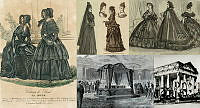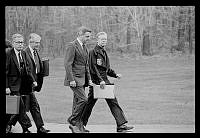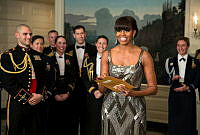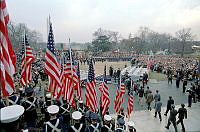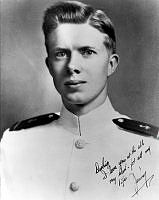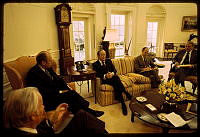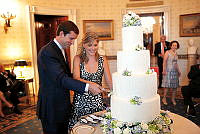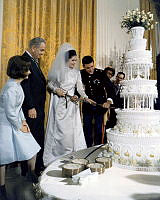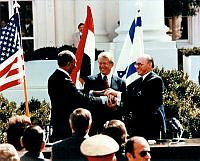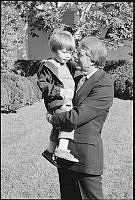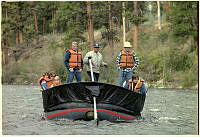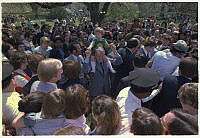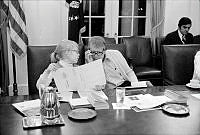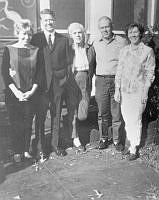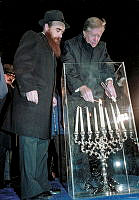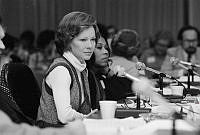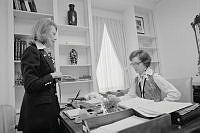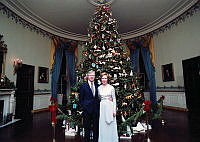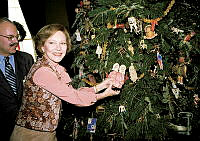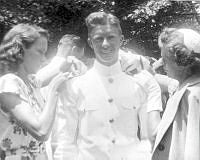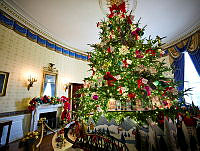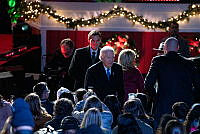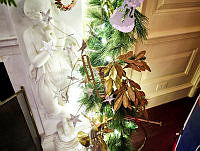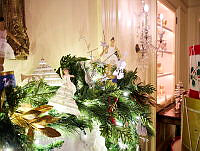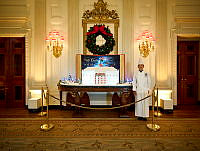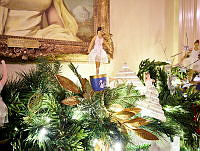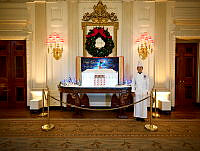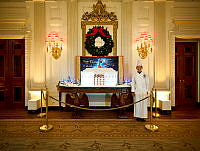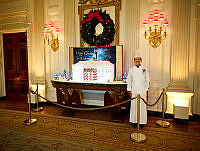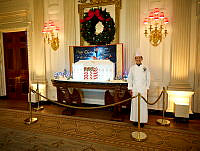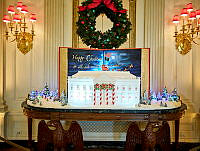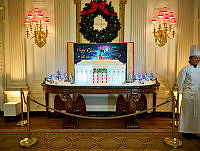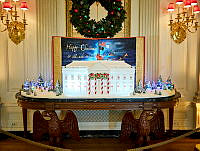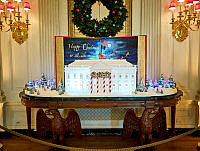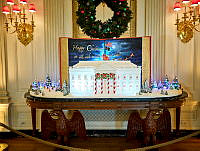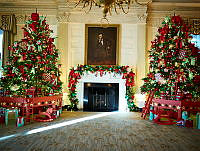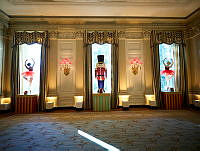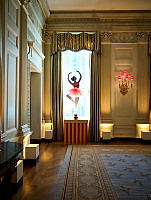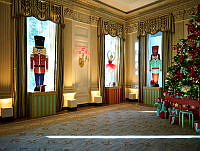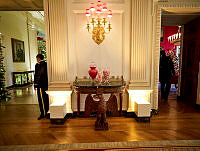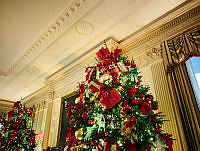Theodore Roosevelt

With the assassination of President McKinley, Theodore Roosevelt, age 42, became the youngest president in the nation’s history. He brought new excitement and power to the presidency, as he briskly led Congress and the American public toward progressive reforms and an aggressive foreign policy.
He took the view that the president as a “steward of the people” should take whatever action necessary for the public good unless expressly forbidden by law or the Constitution. "I did not usurp power," he wrote in 1913, “but I did greatly broaden the use of executive power."
Roosevelt's youth differed sharply from that of the log cabin presidents. He was born on October 27, 1858 in New York City into a wealthy family, but he too struggled—with asthma and other health ailments—and in his triumph became an advocate of the strenuous life.
In 1884, his first wife Alice Lee Roosevelt and his mother Martha died on the same day and only two days after the birth of his daughter, Alice. Roosevelt spent much of the next two years on his properties in the Dakota Badlands. There he mastered his sorrow as he lived in the saddle, driving cattle, hunting big game—he even chased outlaws as a local sheriff. Feeling reinvigorated, Roosevelt returned from the West and began courting his childhood friend Edith Carow. The couple married in London in December 1886. They raised six children together, including Alice.
During the Spanish-American War, Roosevelt resigned his position as assistant secretary of the Navy to command the U.S. Volunteer Cavalry, more famously known as the Rough Riders. Roosevelt led his company’s charge up Kettle Hill during the Battle of San Juan, and his military exploits brought him considerable attention, elevating his profile within the Republican Party. In 1898, he ran for governor of New York and won; he then was asked to join the 1900 Republican ticket as a vice-president under President William McKinley.
As president, Roosevelt held the ideal that the government should be the great arbiter of the conflicting economic forces in the nation, especially between capital and labor, guaranteeing justice to each and dispensing favors to none.
Roosevelt emerged spectacularly as a “trust buster” by forcing the dissolution of a great railroad combination in the Northwest. Other antitrust suits under the Sherman Act followed, and his willingness to take on corporations and monopolies enhanced his popularity with the American public.
Roosevelt also steered the United States more into world politics. He liked to quote a favorite proverb, “Speak softly and carry a big stick.” Aware of the strategic need for a shortcut between the Atlantic and Pacific for American vessels, Roosevelt facilitated the construction of the Panama Canal by sending naval ships to support the Panamanians' independence movement. Once Columbia recognized Panama's independence, the new government gave the U.S. control of the canal for $10 million and a yearly payment. Additionally, the Roosevelt Corollary to the Monroe Doctrine prevented the establishment of foreign bases in the Caribbean and arrogated the sole right of intervention in Latin America to the United States.
He won the Nobel Peace Prize for mediating the Russo-Japanese War, the first American president to receive this honor. Roosevelt also believed that a powerful navy was key to maintaining peace. In 1907, he sent the “Great White Fleet” around the world to demonstrate U.S. naval power and gain valuable experience on the open seas.
Some of Theodore Roosevelt's most enduring achievements were in conservation. He added enormously to the national forests in the West, reserved lands for public use, and fostered great irrigation projects.
He crusaded endlessly on matters big and small, exciting audiences with his high-pitched voice, jutting jaw, and pounding fist. “The life of strenuous endeavor” was a must for those around him, as he romped with his five younger children and led ambassadors on hikes through Rock Creek Park in Washington, D.C.
Leaving the presidency in 1909, Roosevelt went on an African safari, then jumped back into politics. In 1912 he ran for president on the Progressive Party ticket. To reporters he once remarked that he felt as fit as a “bull moose,” the nickname of his new party.
While campaigning in Milwaukee, he was shot in the chest by a fanatic. Roosevelt soon recovered, but his words at that time remained applicable at the time of his death on January 6, 1919: “No man has had a happier life than I have led; a happier life in every way.”













